- News
- Reviews
- Bikes
- Components
- Bar tape & grips
- Bottom brackets
- Brake & gear cables
- Brake & STI levers
- Brake pads & spares
- Brakes
- Cassettes & freewheels
- Chains
- Chainsets & chainrings
- Derailleurs - front
- Derailleurs - rear
- Forks
- Gear levers & shifters
- Groupsets
- Handlebars & extensions
- Headsets
- Hubs
- Inner tubes
- Pedals
- Quick releases & skewers
- Saddles
- Seatposts
- Stems
- Wheels
- Tyres
- Tubeless valves
- Accessories
- Accessories - misc
- Computer mounts
- Bags
- Bar ends
- Bike bags & cases
- Bottle cages
- Bottles
- Cameras
- Car racks
- Child seats
- Computers
- Glasses
- GPS units
- Helmets
- Lights - front
- Lights - rear
- Lights - sets
- Locks
- Mirrors
- Mudguards
- Racks
- Pumps & CO2 inflators
- Puncture kits
- Reflectives
- Smart watches
- Stands and racks
- Trailers
- Clothing
- Health, fitness and nutrition
- Tools and workshop
- Miscellaneous
- Buyers Guides
- Features
- Forum
- Recommends
- Podcast
feature
 Moon Vortex Pro Front Light.jpg
Moon Vortex Pro Front Light.jpgBike lights: 10 insider facts you need to know before you buy
Tech advances mean that today's bike lights are a world apart from those of even a decade ago but they're not without their flaws – some bigger than others.
If you're in the market for some new lights, here are a few things to bear in mind...
Not many conform to the rules
The Department for Transport says, "If either of [your front and rear] lights is capable of emitting a steady light, then it must conform to BS6102/3 [or an equivalent EU standard] and be marked accordingly, even if used in flashing mode.
"Purely flashing lights are not required to conform to BS6102/3, but the flash rate must be between 60 and 240 equal flashes per minute (1-4 per second)."
In fact, few lights are marked as conforming to BS6102/3 or an EU equivalent. You're very unlikely to be challenged by the police as long as you're showing a white light at the front and a red light at the rear, although technically a lack of conformity could be held against you in court in the event of a road traffic incident.
Some settings can dazzle other road users
The Highway Code says, "You MUST NOT use any lights in a way which would dazzle or cause discomfort to other road users, including pedestrians, cyclists and horse riders."
Some lights, particularly those designed for off-road riding, can easily dazzle oncoming traffic if left in certain settings and/or at certain angles. You need to position your lights in such a way as to avoid this, and be prepared to switch to a lower setting when vehicles approach in the opposite direction.
Not all beam shapes are equal!
The shape of the beam can vary hugely between lights. Some – especially those designed primarily for mountain biking – use an unregulated beam and plenty of firepower.
Others follow German requirements by offering a more squat beam pattern that won't have this effect. However, of all the lights included in road.cc's Front Light Beam Comparison Engine (below) this year, only the BBB Swat (above) would be legal in Germany.
That said, lights that we've tested from Exposure, Knog and Ravemen do offer road-focused beam patterns. Check out results in the Beam Comparison Engine (below) to make sure you get exactly what you're after.
More lumens don't mean a better light
Closely related to the above point, more lumens don't necessarily make for a better light.
Most brands describe their lights in terms of lumens – a measure of the total quantity of visible light emitted – but the charts in our Front Light Beam Comparison Engine are based on lux – how much light arrives at a given point in the road. Lux takes into account the area over which the lumens are spread.
Lumens don't tell the whole story. A light with a high lumens rating might not provide as much useful illumination as a light with a lower lumens rating and a better beam pattern.
There's little point sending a lot of light upwards or a long way off the side of the road, for example. Similarly, there's little point having a super-bright central spot to a beam if it means your eyes can't adjust to anything surrounding it.
For our Front Light Beam Comparison Engine we measure the lux value of the beam two metres from the lamp. We take readings at the centre of the beam and then at 10cm increments until we get a metre from the centre, giving 11 readings in all. Again, we'd urge you to look carefully at the results to make sure you get a light that's suitable for your needs.
Run-times vary massively
Some lights can run for much longer than others between charges.
Most people limit their night-time cycling to getting to/from work or maybe a couple of hours on a midweek training ride. If that's you, the majority of lights will be able to cover it.
It's worth mentioning, though, that before you buy a new light you should check the manufacturer's claimed run-time that refers to the setting you're likely to use most – which might not be the run-time for the lowest setting that they shout about on the packaging.
You'll forget to recharge
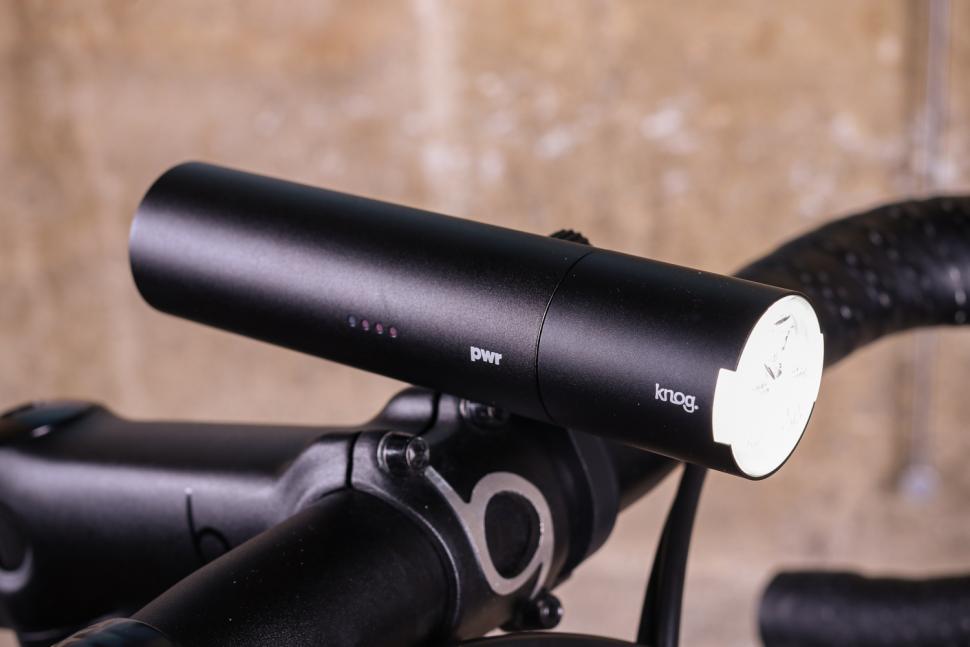 Most lights have some means of telling you how much battery charge remains – a gauge or a button-colour indicator, for example. Even so, you might occasionally forget to check, particularly if you ride at irregular intervals.
Most lights have some means of telling you how much battery charge remains – a gauge or a button-colour indicator, for example. Even so, you might occasionally forget to check, particularly if you ride at irregular intervals.
The best advice is to carry emergency front and rear lights in your bag or seatpack – small ones that are always fully charged.
The Knog Blinder Mini Chippy Twinpack (£47.99) lights are tiny and weigh just 36g, for example. You won't see far with these but they'll make sure you're noticed should your main light run out of juice.
Check out the mount
Don't forget to take a good look at the mount before buying any new light. It's sometimes the weakest point of the design.
The best light in the world will have you cussing if a poor mount doesn't hold steady and it ends up pointing at the Moon every time you hit a pothole. Finding out at the end of a ride that your rear light has been ejected somewhere along the route is similarly bad news.
It's difficult to tell in advance whether a mount is going to perform well and prove durable, but in our experience you're safer with one that can be tightened in place rather than one that's held with an O-ring (although some O-rings work fine on some handlebars). Really, though, you need to know about first hand experience from other riders, so our reviews are a great place to start.
USB charging can be slow
The ability to charge a light via USB can be useful but if you're using a USB port on your computer it's going to be slower than plugging it into the mains.
Also, USB recharging can sometimes be a faff. For example, Apple's latest laptops come with USB-C ports only. That means you'll need an adaptor to charge some lights.
The rubber flaps covering USB ports can sometimes be a pain to use too. They don't always push back in easily after charging and sometimes pop out unexpectedly in use, allowing water and dirt inside.
Don't assume this year's model will be as good as last year's
Last year's version of a particular light might have got great reviews but that doesn't mean that this year's one will be as strong. Manufacturers rarely leave their lights alone, even when they've got it right first time, so rely only on the latest reviews.
The tech will be superseded before you know it
Chances are that the lights you're currently using have already been replaced by something better. Sorry!
Lezyne once told us that light technology advances every few weeks. By the time a product gets produced, shipped and hits the shelves, it's already out-dated.
Of course, you could say the same about a lot of technology, and it doesn't mean you need to update your lights constantly, but it does mean that even if you spend a lot of money on the best, it won't be the best for long.
Mat has been in cycling media since 1996, on titles including BikeRadar, Total Bike, Total Mountain Bike, What Mountain Bike and Mountain Biking UK, and he has been editor of 220 Triathlon and Cycling Plus. Mat has been road.cc technical editor for over a decade, testing bikes, fettling the latest kit, and trying out the most up-to-the-minute clothing. He has won his category in Ironman UK 70.3 and finished on the podium in both marathons he has run. Mat is a Cambridge graduate who did a post-grad in magazine journalism, and he is a winner of the Cycling Media Award for Specialist Online Writer. Now over 50, he's riding road and gravel bikes most days for fun and fitness rather than training for competitions.
Latest Comments
- Tom_77 45 min 18 sec ago
The SaddlePod looks nice, but if you're in the UK by the time you've paid shipping ($31) and import duty (who knows where we'll be with that come...
- VIPcyclist 46 min 34 sec ago
Instantly on the discounted list due to the ridiculous price.
- TheBillder 48 min 45 sec ago
I've had (past tense is deliberate) 3 of these over the past 5 years. I'm back here researching for a replacement as my last one broke last week. I...
- Steve K 2 hours 32 min ago
A very good family friend had worked at the Department of Transport. He told me when I had that car, that they'd done a study at one stage about...
- chrisonabike 2 hours 50 min ago
And the next time - plead sympathy for your addiction, caused by trauma from your previous "accident"...
- wtjs 2 hours 53 min ago
Butyric Acid... was the most disgusting thing I have ever smelt in the lab...
- ubercurmudgeon 3 hours 24 min ago
Even a stopped clock, etc, etc...
- Bigtwin 4 hours 45 min ago
I wouldn't be meeting that Orange Pillock anywhere, let alone 1/2 way.
- Laz 5 hours 1 min ago
If the local police is unwilling or unable to do their job properly, then perhaps her insurance provider ought to re-evaluate the risks she poses...
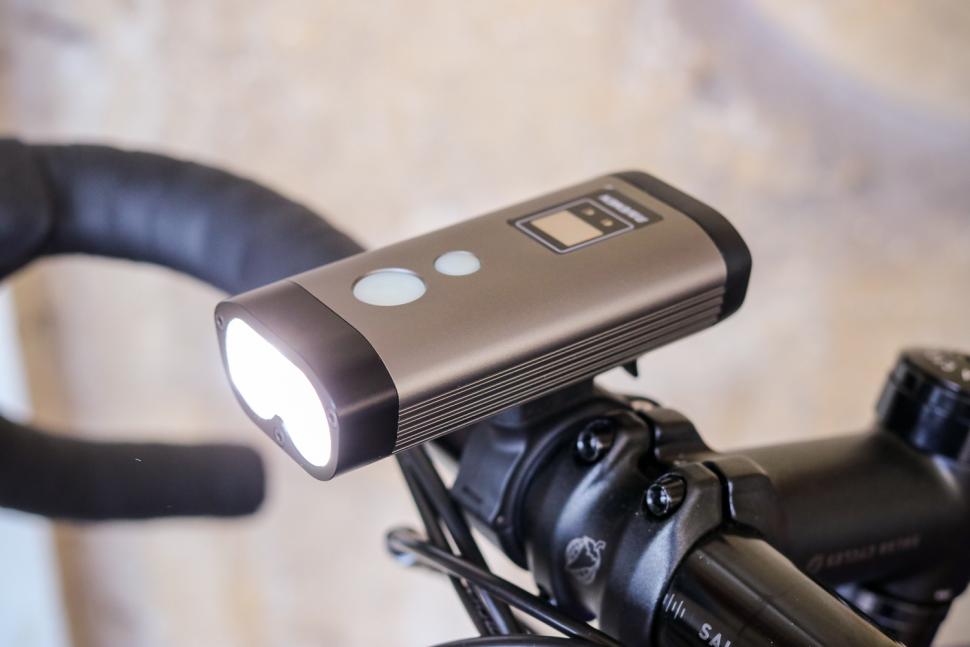
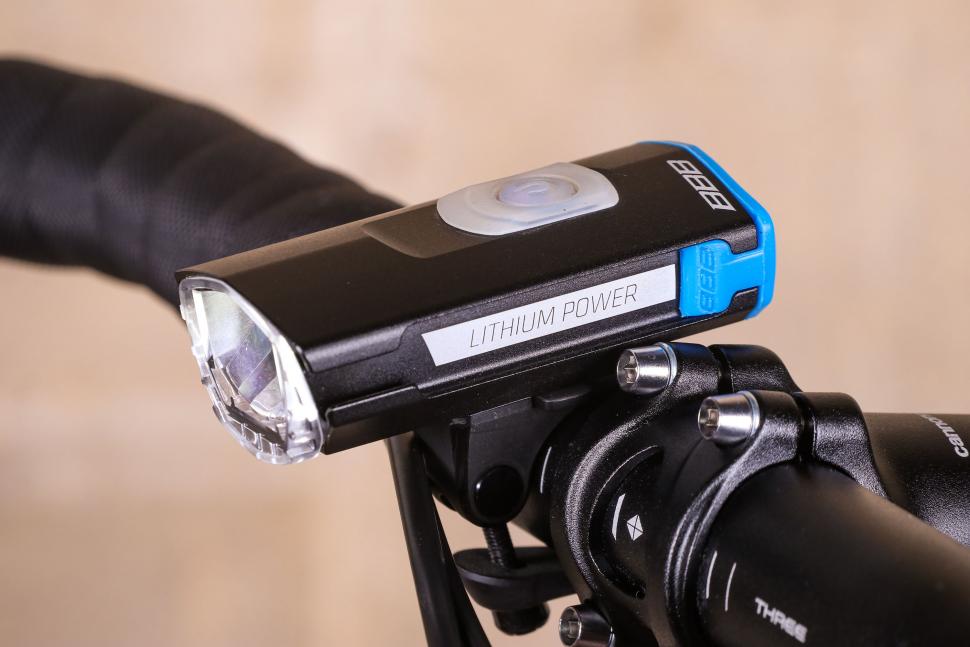

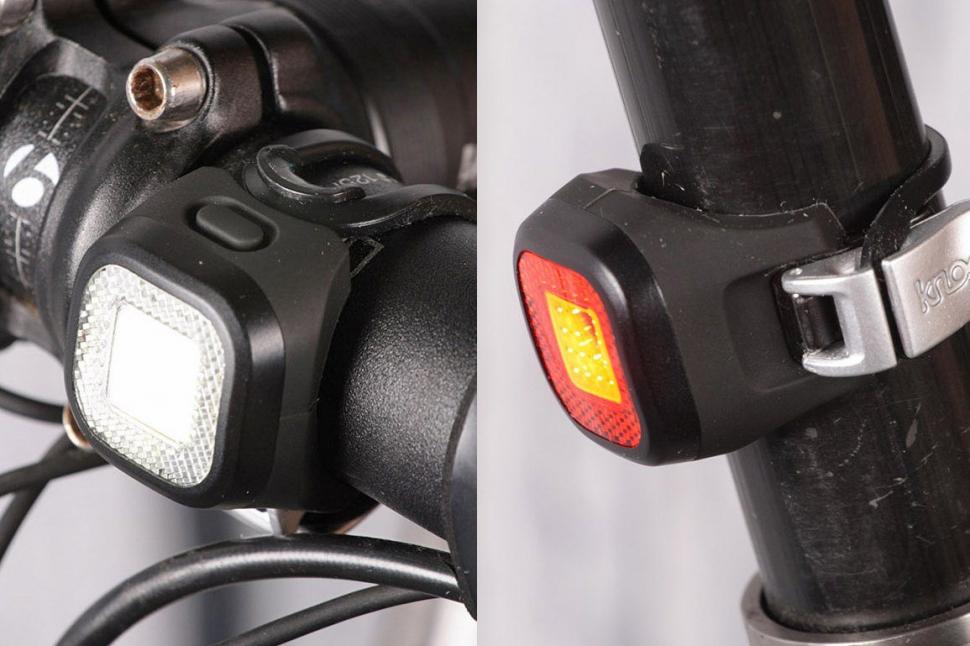
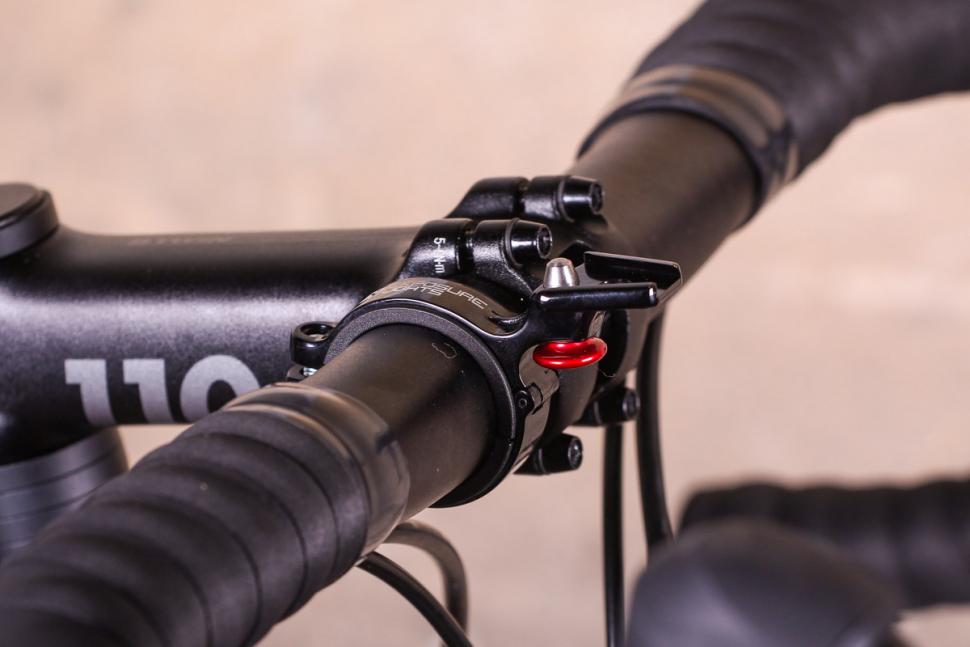
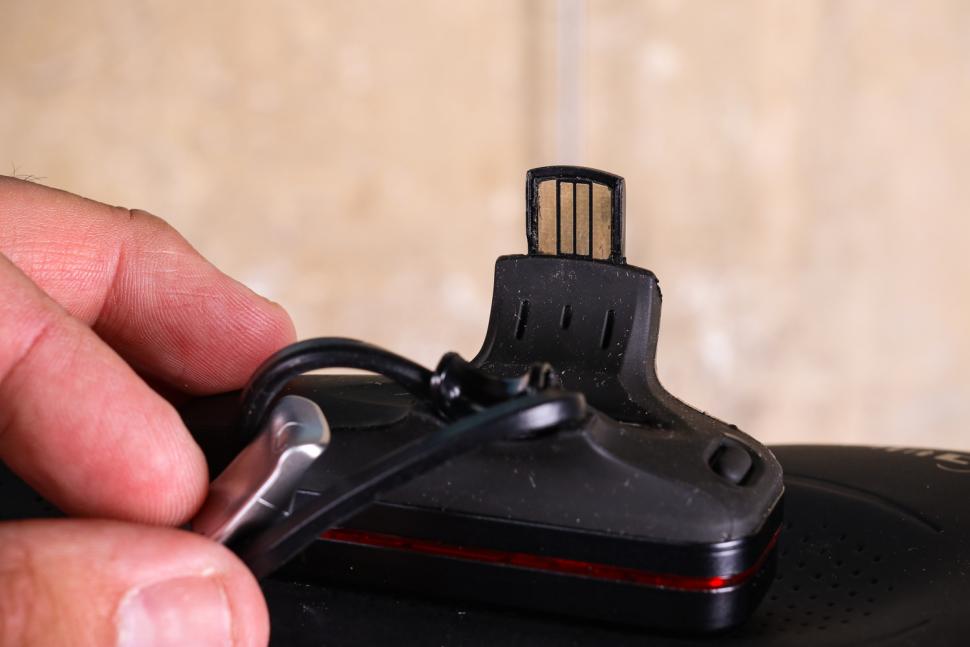
Add new comment
20 comments
It would be nice to get the Cycliq front camera light into the Database, in my experience its good enough to be your single front light, plus the run time is decent.
Would be good if your reviews could highlight those lights which have a USB-C charge socket instead of the legacy micro-USB.
It grates that the manufacturers are still pushing out micro-usb lights, hiding behind a non-specific "usb charging" in their spec details. If you could, um, shine a light on their shame perhaps more would move with the times and adopt usb-C, so that we cyclists can finally stop faffing about with two usb standards.
My tip would be to look for lights that have replaceable, rechargeable 18650 batteries.
These are a handy standard because they used to be found in laptops and are now commonly used in those vaping things. So you can find replacements in stock at garages, off-licences and vape shops.
I've seen these used in lights from Leyzene, Moon and others. The cells are pretty small too so if you're doing a long night ride, something the the Dunwich Dynamo you can carry spares in their little cases in a jersey pocket without taking much room at all.
Just wish the Cycliq lights supported them.
My front light made my Cateye bike comp. malfunction ;-(
It became our in house torch.
I would also add that folks should not overlook the humble rear reflector (the ones that everyone rushes to take off a new bike along with the bell, the front reflector and the spokey-dokey on the cassette). A good reflector weighs next to nothing and, if kept clean, can provide an excellent backup to a rear light...and a backup which never needs recharging. In fact, when driving behind a cyclist, I have found a decent reflector to be more effective than many of the cheapo/rubbish rear lights that many commuters use.
I've got a bolted-on rear light on the back of my carrier/rack. It's European, doesn't flash, and has a reflector built in.
(I have a blinky on a loop on my saddle bag, too).
Does anyone have any suggestions for fitting lights onto a non-round aero set of handlebars?
I've got a stretchy silicon mounting band that I've tried that with, but then the problem is that the light isn't at the right angle. Maybe I should pair that with a small wedge to get the right angle.
Have you tried a Cateye Volt? Their mount uses a sort of plastic jubilee clip arrangement which is probably more tolerant than most of a non-round bar shape.
If you run a GPS computer, a lot of the out-front Chinese computer mounts which attach to the front of your stem have go-pro mounts on the underside. You can then buy the adaptor for your light which fits this. This works for my moon light.
Then why do you publish the reviews of those lights on road.cc and not off.road.cc?
It is getting ridiculous out there. I was blinded by arseholes with fucking photon cannons on their bikes twice on the way home yesterday. By which I mean I literally had to stop because I couldn't see, and then wait for the after-image to fade. I wasn't merely annoyed, I wasn't just inconvenienced. I had to take action to ensure my safety because "I'm all right Jack" twats have bought inappropriate lights, maybe on the recommendation of web sites such as this one, which are causing dangerous situations.
There are good-quality, powerful STVZO lights being sold by UK-based retailers, and even cheaper from online retailers who don't pay their taxes. Review them.
How is the Cateye AMPP in the comparison tool managing to light up the stem and tops behind it? Is there some kind of extraneous light source interfering with the results, or have Cateye just forgotten what the purpose of a front light is meant to be?
From the review of that light elsewhere on this site:
"One element of the Cateye that I particularly like is that it doesn't just give out light from the front, because of the OptiCube lens technology it also allows light to shine horizontally, making you more visible from the side."
Well that's fair enough (although I guess they meant 'perpendicularly', rather than 'horizontally' - after all, don't most lights shine a lot of light horizontally - straight out in front?). Shining light backwards, though, seems at least wasteful, if not counterproductive, if, as the image suggests, it results in a source of light in the rider's peripheral vision that's competing with the light it's shedding on the road ahead.
The rubber band you attach your light to your handlebar with can be extremely tough to stretch. I have a Lezyne like the one in the main article photo, and on a cold morn it can HURT getting that one on! If you keep it indoors and give it a good stretch before trying to attach it, the rubber loosens off a touch.
The connecting wire on the Hope lights is their weak point, but they repair them far longer than would seem reasonable. And then when the battery eventually will take no more charge, buy a new slightly larger and better one.
I believe that Exposure will remove and replace a cell for an amount of money.
Yes, they do cost more, but it is more of a long term investment.
What they also don't tell you is how many charges the batteries will take before failing and rendering the whole unit useless...
Yup, a bulb with a 50,000/100,000 hour life span but the rest of the unit might in some cases get you a 1000 hours before the battery conks out or some other aspect of the unit fails.
For me the Hope brackets are an engineering work of art.